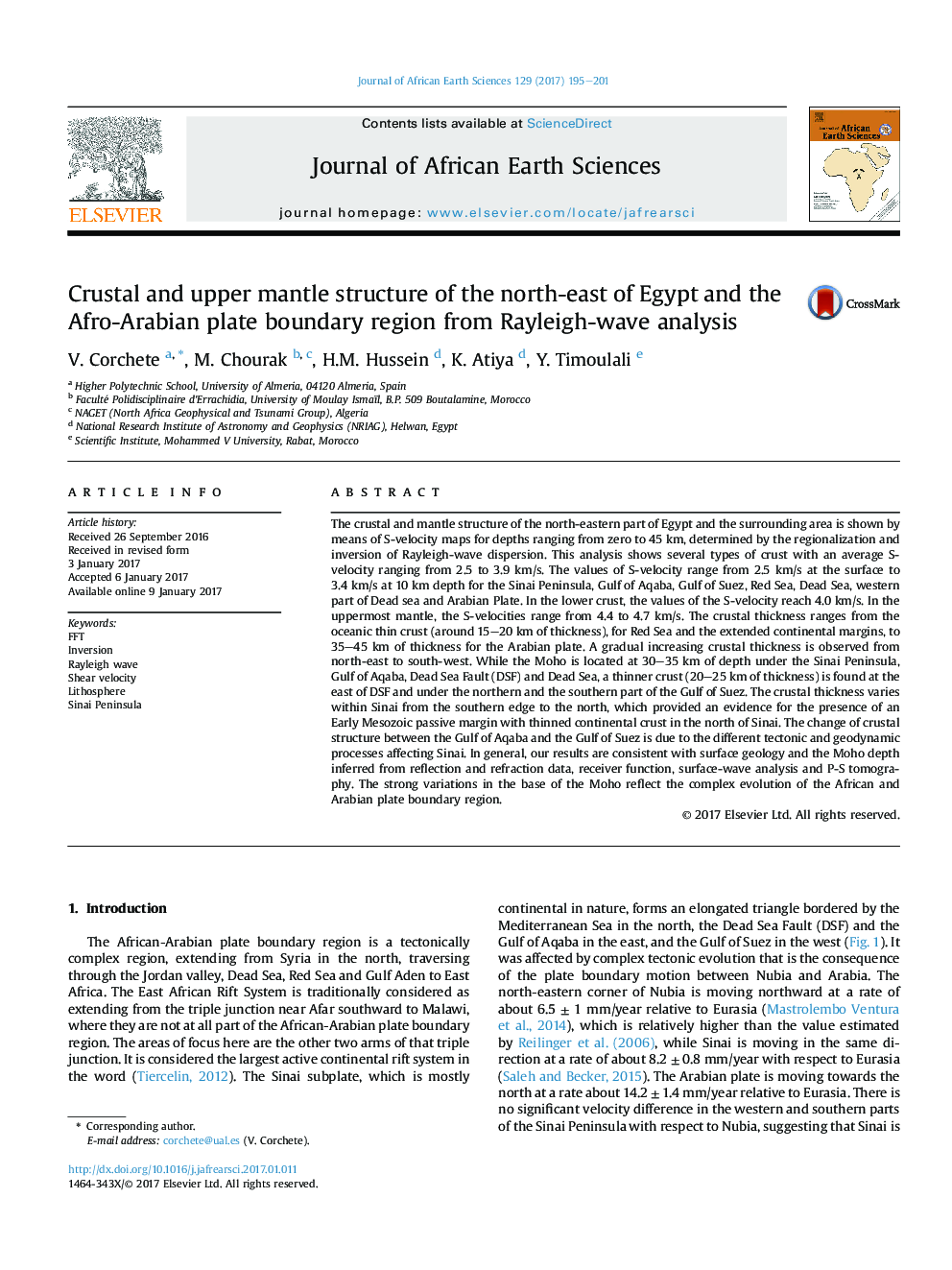| کد مقاله | کد نشریه | سال انتشار | مقاله انگلیسی | نسخه تمام متن |
|---|---|---|---|---|
| 5785688 | 1640179 | 2017 | 7 صفحه PDF | دانلود رایگان |
عنوان انگلیسی مقاله ISI
Crustal and upper mantle structure of the north-east of Egypt and the Afro-Arabian plate boundary region from Rayleigh-wave analysis
دانلود مقاله + سفارش ترجمه
دانلود مقاله ISI انگلیسی
رایگان برای ایرانیان
کلمات کلیدی
موضوعات مرتبط
مهندسی و علوم پایه
علوم زمین و سیارات
زمین شناسی
پیش نمایش صفحه اول مقاله

چکیده انگلیسی
The crustal and mantle structure of the north-eastern part of Egypt and the surrounding area is shown by means of S-velocity maps for depths ranging from zero to 45Â km, determined by the regionalization and inversion of Rayleigh-wave dispersion. This analysis shows several types of crust with an average S-velocity ranging from 2.5 to 3.9Â km/s. The values of S-velocity range from 2.5Â km/s at the surface to 3.4Â km/s at 10Â km depth for the Sinai Peninsula, Gulf of Aqaba, Gulf of Suez, Red Sea, Dead Sea, western part of Dead sea and Arabian Plate. In the lower crust, the values of the S-velocity reach 4.0Â km/s. In the uppermost mantle, the S-velocities range from 4.4 to 4.7Â km/s. The crustal thickness ranges from the oceanic thin crust (around 15-20Â km of thickness), for Red Sea and the extended continental margins, to 35-45Â km of thickness for the Arabian plate. A gradual increasing crustal thickness is observed from north-east to south-west. While the Moho is located at 30-35Â km of depth under the Sinai Peninsula, Gulf of Aqaba, Dead Sea Fault (DSF) and Dead Sea, a thinner crust (20-25Â km of thickness) is found at the east of DSF and under the northern and the southern part of the Gulf of Suez. The crustal thickness varies within Sinai from the southern edge to the north, which provided an evidence for the presence of an Early Mesozoic passive margin with thinned continental crust in the north of Sinai. The change of crustal structure between the Gulf of Aqaba and the Gulf of Suez is due to the different tectonic and geodynamic processes affecting Sinai. In general, our results are consistent with surface geology and the Moho depth inferred from reflection and refraction data, receiver function, surface-wave analysis and P-S tomography. The strong variations in the base of the Moho reflect the complex evolution of the African and Arabian plate boundary region.
ناشر
Database: Elsevier - ScienceDirect (ساینس دایرکت)
Journal: Journal of African Earth Sciences - Volume 129, May 2017, Pages 195-201
Journal: Journal of African Earth Sciences - Volume 129, May 2017, Pages 195-201
نویسندگان
V. Corchete, M. Chourak, H.M. Hussein, K. Atiya, Y. Timoulali,